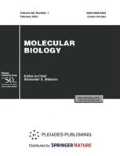Abstract
(-)-Epigallocatechin gallate (EGCG), the most abundant component in green tea, has a potent anti-apoptotic activity. The purpose of this study was to investigate the protective effects of EGCG and their molecular mechanisms on high glucose-induced apoptosis of human lens epithelial cells (HLEB-3). HLEB-3 cells were exposed to various concentrations of glucose and EGCG. Cell death was assessed by MTT assay and flow cytometry using annexin V and propidium iodide. The expression of the Bcl-2 family, c-fos, c-myc and p53 was measured by real-time PCR. EGCG decreased the Bcl-2/Bax expression stimulated by a high glucose. Moreover, EGCG suppressed the high glucose-induced expression of c-fos, c-myc and p53. These findings suggest that EGCG protects HLEB-3 cells from high glucose-induced apoptosis by regulating the gene expression of the Bcl-2 family, c-fos, c-myc and p53. Thus, EGCG may have a potential protective effect against diabetic cataract formation.
Similar content being viewed by others
References
Mulhern M.L., Madson C.J., Danford A., Ikesugi K., Kador P.F., Shinohara T. 2006. The unfolded protein response in lens epithelial cells from galactosemic rat lenses. Invest. Ophthalmol. Vis. Sci. 47, 3951–3959.
Nambu H., Kubo E., Takamura Y., Tsuzuki S., Tamura M., Akagi Y. 2008. Attenuation of aldose reductase gene suppresses high-glucose-induced apoptosis and oxidative stress in rat lens epithelial cells. Diabetes Res. Clin. Pract. 82, 18–24.
Kubo E., Urakami T., Fatma N., Akagi Y., Singh D.P. 2004. Polyol pathway-dependent osmotic and oxidative stresses in aldose reductase-mediated apoptosis in human lens epithelial cells: Role of AOP2. Biochem. Biophys. Res. Commun. 314, 1050–1056.
Takamura Y., Kubo E., Tsuzuki S., Akagi Y. 2003. Apoptotic cell death in the lens epithelium of rat sugar cataract. Exp. Eye Res. 77, 51–57.
Arts I.C., van De Putte B., Hollman P.C. 2000. Catechin contents of foods commonly consumed in The Netherlands: 2. Tea, wine, fruit juices, and chocolate milk. J. Agric. Food Chem. 48, 1752–1757.
Yao K., Ye P., Zhang L., Tan J., Tang X., Zhang Y. 2008. Epigallocatechin gallate protects against oxidative stress-induced mitochondria-dependent apoptosis in human lens epithelial cells. Mol. Vis. 31, 217–223.
Hirai M., Hotta Y., Ishikawa N., Wakida Y., Fukuzawa Y., Isobe F., Nakano A., Chiba T., Kawamura N. 2007. Protective effects of EGCg or GCg, a green tea catechin epimer, against postischemic myocardial dysfunction in guinea-pig hearts. Life Sci. 80, 1020–1032.
Tang S.N., Fu J., Shankar S., Srivastava R.K. 2012. EGCG enhances the therapeutic potential of gemcitabine and CP690550 by inhibiting STAT3 signaling pathway in human pancreatic cancer. PloS One. 7, e31067.
Zhang G., Wang Y., Zhang Y., Wan X., Li J., Liu K., Wang F., Liu K., Liu Q., Yang C., Yu P., Huang Y., Wang S., Jiang P., Qu Z., Luan J., Duan H., Zhang L., Hou A., Jin S., Hsieh T.C., Wu E. 2012. Anti-cancer activities of tea epigallocatechin-3-gallate in breast cancer patients under radiotherapy. Curr. Mol. Med. 12, 163–176.
Kamalden T.A., Ji D., Osborne N.N. 2012. Rotenoneinduced death of RGC-5 cells is caspase independent, involves the JNK and p38 pathways and is attenuated by specific green tea flavonoids. Neurochem. Res. 37, 1091–1101.
Ren L., Yang H.Y., Choi H.I., Chung K.J., Yang U., Lee I.K., Kim H.J., Lee D.S., Park B.J., Lee T.H. 2011. The role of peroxiredoxin V in (-)-epigallocatechin 3-gallate-induced multiple myeloma cell death. Oncol. Res. 19, 391–398.
Cao G., Chen M., Song Q., Liu Y., Xie L., Han Y., Liu Z., Ji Y., Jiang Q. 2012. EGCG protects against UVB-induced apoptosis via oxidative stress and the JNK1/c-Jun pathway in ARPE19 cells. Mol. Med. Report. 5, 54–59.
Singh M., Singh R., Bhui K., Tyagi S., Mahmood Z., Shukla Y. 2011. Tea polyphenols induce apoptosis through mitochondrial pathway and by inhibiting nuclear factor-kappaB and Akt activation in human cervical cancer cells. Oncol. Res. 19, 245–257.
Nakagami H., Morishita R., Yamamoto K., Taniyama Y., Aoki M., Yamasaki K., Matsumoto K., Nakamura T., Kaneda Y., Ogihara T. 2002. Hepatocyte growth factor prevents endothelial cell death through inhibition of bax translocation from cytosol to mitochondrial membrane. Diabetes. 51, 2604–2611.
Piro S., Anello M., Di Pietro C., Lizzio M.N., Patanè G., Rabuazzo A.M., Vigneri R., Purrello M., Purrello F. 2002. Chronic exposure to free fatty acids or high glucose induces apoptosis in rat pancreatic islets: Possible role of oxidative stress. Metabolism. 51, 1340–1347.
Wang H.J., Lee E.Y., Han S.J., Kim S.H., Lee B.W., Ahn C.W., Cha B.S., Lee H.C. 2012. Dual pathways of p53-mediated glucolipotoxicity-induced apoptosis of rat cardiomyoblast cell: activation of p53 proapoptosis and inhibition of Nrf2-NQO1 antiapoptosis. Metabolism. 61, 496–503.
Fiordaliso F., Leri A., Cesselli D., Limana F., Safai B., Nadal-Ginard B., Anversa P., Kajstura J. 2001. Hyperglycemia activates p53 and p53-regulated genes leading to myocyte cell death. Diabetes. 50, 2363–2375.
van de Casteele M., Kefas B.A., Cai Y., Heimberg H., Scott D.K., Henquin J.C., Pipeleers D., Jonas J.C. 2003. Prolonged culture in low glucose induces apoptosis of rat pancreatic beta-cells through induction of cmyc. Biochem. Biophys. Res. Commun. 312, 937–944.
Pascal S.M., Guiot Y., Pelengaris S., Khan M., Jonas J.C. 2008. Effects of c-MYC activation on glucose stimulus-secretion coupling events in mouse pancreatic islets. Am. J. Physiol. Endocrinol. Metab. 295, E92–E102.
Jonas J.C., Laybutt D.R., Steil G.M., Trivedi N., Pertusa J.G., van de Casteele M., Weir G.C., Henquin J.C. 2001. High glucose stimulates early response gene c-Myc expression in rat pancreatic beta cells. J. Biol. Chem. 276, 35375–35381.
Author information
Authors and Affiliations
Corresponding author
Additional information
Published in Russian in Molekulyarnaya Biologiya, 2013, Vol. 47, No. 2, pp. 251–257.
The article is published in the original.
Rights and permissions
About this article
Cite this article
Ye, P., Lin, K., Li, Z. et al. (-)-Epigallocatechin gallate regulates expression of apoptotic genes and protects cultured human lens epithelial cells under hyperglycemia. Mol Biol 47, 222–227 (2013). https://doi.org/10.1134/S0026893313020106
Received:
Accepted:
Published:
Issue Date:
DOI: https://doi.org/10.1134/S0026893313020106




